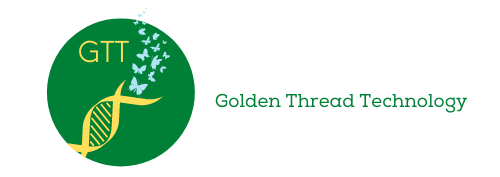Taming the Challenge of Athletic Injuries
Each year, one out of eight American youth athletes are injured severely enough to require medical attention. That’s 3.5 million out of 30 million youth athletes. Injury risks for youth are much higher than for adults. A youth athlete is 4x more likely to get hurt than an adult athlete. Now, with advanced genetic science, personal injury risks can be identified, and action steps can be taken to reduce the risk. Each person’s unique genetic inputs identify body structure differences, personalized nutritional requirements, and behavioral tendencies that can influence the risk of injury. Golden Thread Technology is taking the lead with a holistic, science-based approach to reduce athletic injury risk.
Anyone who is or was an athlete knows the worst thing that can happen is getting hurt. Winning and losing are all part of being an athlete. But an injury takes you out of the game, sometimes forever. Now just imagine that science can map your body and pinpoint the body areas that are more susceptible, or less susceptible, to injury. Would it help to know if you are more likely to suffer an ACL tear or elbow problem? Suppose that same science can provide you a nutrient map so that you come closer to optimizing your nutrient intakes to what your body uniquely needs and uses. Wouldn’t this be helpful, especially in training and in preparing for the big competition? Of course it would.
This is why Golden Thread Technology is building : a whole new way to let you, the athlete, look at your body. This will empower you to be a whole lot more focused on what you need, knowing that it can be different than what your teammates and competitors need. We are tapping into a massive amount of published genetic science to build a dynamic mobile application that will let you take better care of your body.
We launched Golden Thread Technology because as athletes and former athletes we felt that one-size-fits-all training, warmups and nutrition simply doesn’t work. Two studies demonstrate how valuable genetic data is, and can be. One study found two genetic markers associated with differential concussion risk.* One marker increased concussion risk three-fold. The second marker decreased concussion risk 40%. The second study found that Stanford triathletes were able to reduce their injuries by 44% when given genetic data about their body structure and nutrition.**
We view these as simply a start in empowering athletes to have more control over their performance and injury risks. Using genetic data to personalize training, workout and nutrition strategies builds on each person’s genetic uniqueness. We have identified three genetic groupings that can impact an athlete’s injury risk and performance. The first are the genetic inputs to the athlete’s body structure. Awareness of physical strengths and weaknesses that include genetic data will help the athlete, trainer and coach pinpoint areas that may need special attention. The second grouping relates to how genes interact with the person’s nutrient stream. This nutrigenomics approach helps identify paths to a more suitable nutrition program for each athlete. The third group uses genetic research showing how genes impact behavior. For example, risk taking behavior has a genetic component. Depending on the sport and specific activity, some types of risk taking behaviors are more likely to result in injury. Knowing the risk-taking propensity can help the coach and athlete identify ways of playing that lower injury risk while accepting what may be considered appropriate risk taking.
* Genetic Polymorphisms Associated with the risk of Concussion in 1056 College Athletes: a Multicentre Prospective Cohort Study, Thomas Terrell, Ruth Abramson, et. al. Br. J. Sports Med. 2017, 1-8
**Applying Personal Genetic Data to Injury Risk Assessment in Athletes, Gabriella Goodlin, Andrew Roos, Thomas Roos, Claire Hawkins, Sydnew Beacher, Stephen Baur, Stuart Kim, PLOS ONE, April 26, 2015
